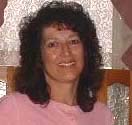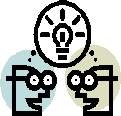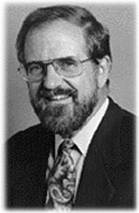
August
2005
Volume 1, Issue 1
The National Osteonecrosis Foundation
Inside
|
(A Letter from David Hungerford)
The
NONF was founded in 1996 as a non-profit organization to bring together
the needs of patients with osteonecrosis (ON), information about
the disease and physicians with interest and expertise in the treatment
of ON. Although we have had some successes, in the creation and
distribution of an information pamphlet about ON, the creation of
a web site for the Foundation (www.nonf.org) and a network of physicians
as members of NONF and experts in the field, NONF has not yet reached
its potential as an organization. Best estimates indicate that there
are 10-20,000 new cases of ON each year. Since the disease occurs
most commonly in the fourth decade of life (average age 38) and
since it is not associated with reduced longevity in most instances,
we estimate that there are in excess of 500,000 people alive today
who have been afflicted with ON. While it is hard to be certain
of the accuracy of these numbers, this is still a lot of people.
Where are they and why is the membership of the NONF at least not
in the thousands? We do not have a good answer to this question.
The majority of people with ON have only one or two joints involved. About 3% of |
cases have multi-joint involvement. These are the people whose lives
are changed forever as illustrated by Marie’s Story (page
3). The most common operation for the majority of patient’s
with ON is a total hip replacement (THR). Fortunately, THR is highly
successful at restoring the patient to full function. Although there
may be some problem with THR in patients in their thirties as far
as life-time longevity is concerned, most patients (even young ones)
will get many years of symptom-free or low-symptom service from
a THR. This category of patient may be less interested in joining
an organization that is dedicated to education and research about
a condition that is not a continuing problem for them. NONF was
started by physicians, and with the exception of the past Executive
Directors and the Secretary/Treasurer, Lynne Jones who is a PhD
researcher in ON, has been directed by physicians. It turns out
that this is not the formula for successful foundations focusing
on a single disease such as the Lupus Foundation, or a particular
organ system such as the Kidney Foundation. In fact the inspiration
for the NONF came from Susan Stephanson, one of my patients with
Ehlers-Danlos Syndrome. (continued on page 2) |
NONF Mission Statement
Today we are working at the frontier between what we know and what we need to know about osteonecrosis and Perthes' Disease. Osteonecrosis means death of bone. This results from a wide variety of conditions, many poorly understood, which lead to major joint damage in children and young adults.
Our goal is to provide much needed funding for medical research and education of patients, physicians, and other health professionals. To all participating physicians, we offer routine informational updates and patient educational support. To all Perthes children, we offer hope for early diagnosis and improved care. To all osteonecrosis patients, we offer hope for discovery of the causes of this debilitating disease and new effective forms of treatment. Through the combined efforts of patients, industry, and caring friends, we will succeed.
We Must Succeed!!!
 |
|
Approximately 15-20,000 new patients are diagnosed with osteonecrosis each year in the United States. Since these patients have a normal life expectancy, there are an estimated 500,000 people living with this disease today. |
|
 |
|
 |
|
|
|
 |
|
|
| Ehlers-Danlos
is named after the pair of doctors that first described the condition.
Ehlers-Danlos is even more uncommon than ON, and there was even
less information about it than there is about ON. Patients with
Ehlers-Danlos Syndrome were at that time often misdiagnosed, resulting
in inappropriate or unsuccessful surgeries that frustrated both
patients and physicians. This patient, Susan Stephanson, decided
to do something about it and started the Ehlers-Danlos Foundation,
which today functions much as we hope the NONF will soon function.
Susan has agreed to act as a consultant during this time of transition.
We are setting
out to transform the Foundation. This will occur as volunteers assume
a greater role in the organization. NONF has always been dedicated
as a service FOR the patients. However it has been organized and
directed by physicians. The transformation will result in an organization
that is not only FOR the patient but also OF the patient and BY
the patient. We believe that the way forward for the NONF consists
of identifying, mobilizing and equipping volunteers to become involved
in the organization. Our past executive directors have been volunteers.
Marie Shanahan, the last executive director, has stepped down from
the role to devote her full efforts to the patient advocacy web
site and internet-based support group that she has so successfully
pioneered, The ON/AVN Support Group International. She will remain |
on the Board as a special consultant, and her internet-based support
group will continue to work cooperatively with the organization.
We are currently without an executive director. Nonetheless, we continue to do what the foundation has done in the past, providing information to patients and physicians. In addition to executive director, we need volunteers at all levels, patient recruitment, grant writing, fundraising, web develop-ment. If you have time and interest, we can probably find something for you to do. The old goals of the NONF remain valid. This transition represents new and renewed efforts to achieve those goals and add new ones, in line with the needs of our members. Ultimately, the Foundation aspires to influence the pace of discovery into the causes of ON and to put patients in touch with specialists who can offer the best possible current treatments, and who are involved in pushing back the frontiers of knowledge so that better prevention and treatment methods are available in the future. Everyone who has a desire to participate in the growth of our foundation is welcome. Participation can take many forms, and this will be the subject of future communications from the NONF to you, its members. Sincerely, David S. Hungerford,
MD |
|
| Research Review |
||
| According
to the National Library of Medicine, there were at least 329 articles
published in medical journals about osteonecrosis (ON) in 2004.
Their topics are quite variable including articles on adult-onset
and juvenile forms (Legg-Calve-Perthes), ON at different locations
(hip, knee, talus, shoulder, spine, pelvis, jaw), and as a complication
of other diseases and surgical procedures.
Although a majority of the articles were clinical studies, case reports, and reviews, there were 26 basic science articles. This represents an increase in the number of studies that are dedicated to increasing our understanding of the disease and its diagnosis and treatment. There were several outstanding articles published in 2004 which may ultimately impact on the prevention and treatment of ON. Some examples include:
|
It is important for us to not only be aware of the results of cutting age clinical and basic science research but also to understand these within the context of what is already known. Look for this spot in future newsletters to stay in touch with the most recent advances in ON research. |
|
| Marie’s Story |
||
| Until
the fall of 1994, I was a busy wife, mother, and medical office
manager. Life was often hectic and as I raced through each day,
never did the concept of long-term chronic illness enter my mind.
That was something that always happened to other people, not to
me. As I locked up the office at the end of each day, bidding goodnight
to the last patient and my boss, I’d head for home, happy
with excitement at seeing my husband, family and friends once again.
Living in the so-called fast lane of suburbia America, I felt my
life was good.
Then, illness struck. Like a thief in the night, it overtook me and within a matter of a few months, my life had changed forever. Gone was my job, gone were most of my friends, gone was our contented home life, and gone were my dreams of a happy and peaceful future. Once illness walked in the door, I had to learn to rebuild my life all over again, step by painful step. After surviving a near-fatal illness in 1995-1996 of the colon and small intestine, I developed osteonecrosis, a.k.a. avascular necrosis, in several major joints. It turned out that the massive doses of steroids I was given for my illness were the culprits; I survived the illness, but my skeleton did not. Left alone in my house for four years, unable to walk or drive, I turned to my computer - my ‘life-line to the world’ and reached out to others with this strange disease. I created a simple webpage called “Marie’s Breakfast Nook,” and never in my wildest dreams did I ever expect to hear from anyone! Almost immediately, I heard from a woman from Long Island, NY. She, too, had AVN and was very eager to talk with me. That was just the beginning. Within six months, we had grown from a group of two to nearly 70. My simple webpage mushroomed into a nearly 20-page site, which was called “The ON/AVN Support Group International.” Within a year, our group had swelled to nearly 500 people who hailed from all over the world. We were hearing from men, women, teenagers, and even parents of younger victims, and all of them virtually were saying the same thing: “I thought I was all alone in this!” In the first two years of our group, we had amassed an army of nearly 3,000 people, all of them suffering from AVN. The thing that always tickled me the most is that all of this was accomplished without my ever having to leave my house!
|
Then, one wonderful day, I received an email from a doctor in Pennsylvania,
asking me to contact Dr. David Hungerford of Johns Hopkins University,
a doctor who somehow had heard about our group and wanted to meet
me.
On a balmy day in July 1999, Dr. David Hungerford, Dr Lynne Jones and Barbara Kelly flew up from Baltimore to my home in New York, and we had a wonderful meeting. On that historic day, I finally realized that there was hope again, that someone who really knew about AVN and understood it, also cared very deeply for its victims. Dr Hungerford told me that he was amazed at my group and what I had managed to accomplish. He also told me that he and a few other doctors had begun a group called the National Osteonecrosis Foundation, and that they needed to reach patients and doctors alike. I agreed to help. The ON/AVN Support Group International and the NONF websites exchanged links and I was asked to become the Executive Director of NONF. I was the Executive Director for five years, but had to step down this past January when our own group became an official non-profit organization. It is an honor that I cherished, and held very dear. It gave me the official stamp of approval to keep on gathering people, to keep on helping to educate and encourage them, and to give them hope. More than anything in the world, we AVN’ers, as I call us, need hope. This cruel affliction takes away much more than just our joints and bones: it takes away inner peace and joy as it depletes our physical abilities and strength. It takes away the freedom of independence, and in so many cases, it often destroys relationships as well. It is tough enough for a couple to deal with family finances today without having to face expensive tests, operations, rehabilitation therapy, and medications. Often the strain of an illness such as ours is just too much for a relationship to bear, tearing it apart at the seams. Today, our once-online only ‘ON/AVN Support Group International’ has evolved into the ON/AVN Support Group Int’l Association, Inc. as an official non-profit organization with a membership spanning the globe. We can be reached via the internet at http://osteonecrosisavnsupport.org or by regular U.S. mail at Box 118, 8500 Henry Avenue, Philadelphia, PA 19128. All those who are looking for support, comfort, and know-ledge about AVN are welcome to joint us.
|
|
| Meet Nicole Willis (Volunteer) |
||
| Nicole
Willis, the Associate Director of NONF, is also an ON survivor.
As a result of high dose steroids she took to treat leukemia in
2001, Nicole quickly developed osteonecrosis. Between 2002 and 2004,
she had both hips, a knee and a shoulder replaced, and still sufferers
from ON in several other joints. While going through treatment,
Nicole was easily able to find information about and support for
her leukemia, which helped her immensely to cope with the disease.
However, when she searched for information and support for her osteonecrosis,
she found very little. She needed help, but it wasn’t there.
After discovering NONF, she used this as her incentive to help NONF
better focus on patient issues.
Nicole, who
has a master’s degree in public health, currently works as
an epidemiologist in clinical research. Her clinical experience
includes research in oncology, vaccines and |
chronic diseases. She has experience in program planning and evaluation,
survey development, database manage-ment, data analysis and many
other areas that will benefit NONF.
In her personal
life, Nicole enjoys volunteering for both the Leukemia and Lymphoma
Society (LLS) and the Liberty Golden Retriever Rescue. As an LLS
volunteer, she serves as a patient ambassador speaking at fundraising
events. She also serves as an LLS first connection volunteer, telephoning
newly diagnosed leukemia patients to talk with them, answer their
questions, and offer them comfort and hope. As a Golden Retriever
Rescue volunteer, she fosters dogs until they find a new home, she
conducts home visits to ensure safe, pet-friendly environments for
the adopted dogs, and has developed the group’s new volunteer
information brochure. Nicole will be a great asset to facilitate
NONF’s future growth and success. |
|
| Volunteers
Needed |
||
Volunteerism
is an excellent example of a “Win-Win”. On the one hand,
it provides an opportunity for the volunteer to help others in need
– especially for the relatively “unknown” disease
of osteonecrosis. On the other hand, it helps a foundation during
its early stages of growth to find people to help the foundation
to get things done.
The NONF is
searching for an Executive Director to oversee the daily operation
of the Foundation. But it doesn’t stop there. We also need
individuals to help with secretarial functions, patient membership
recruitment, membership services (new applications, renewals, database),
grant writing and/or fundraising, web management, newsletter –
content management, marketing/publicity; accounting; and local outreach
(Speakers Bureau & Local Patient Meetings). The home office
is currently in Baltimore. But with the internet, volunteers can
live almost anywhere. If you are interested in finding out more,
please contact us at 410-532-5985 or ljones3@jhmi.edu.
|
||
| ___
We would like to thank Debi Ross for all the hard work she has done on the NONF website! ___ Please complete the survey on the following pages and email to: nicole.willis@gmail.com |
||
